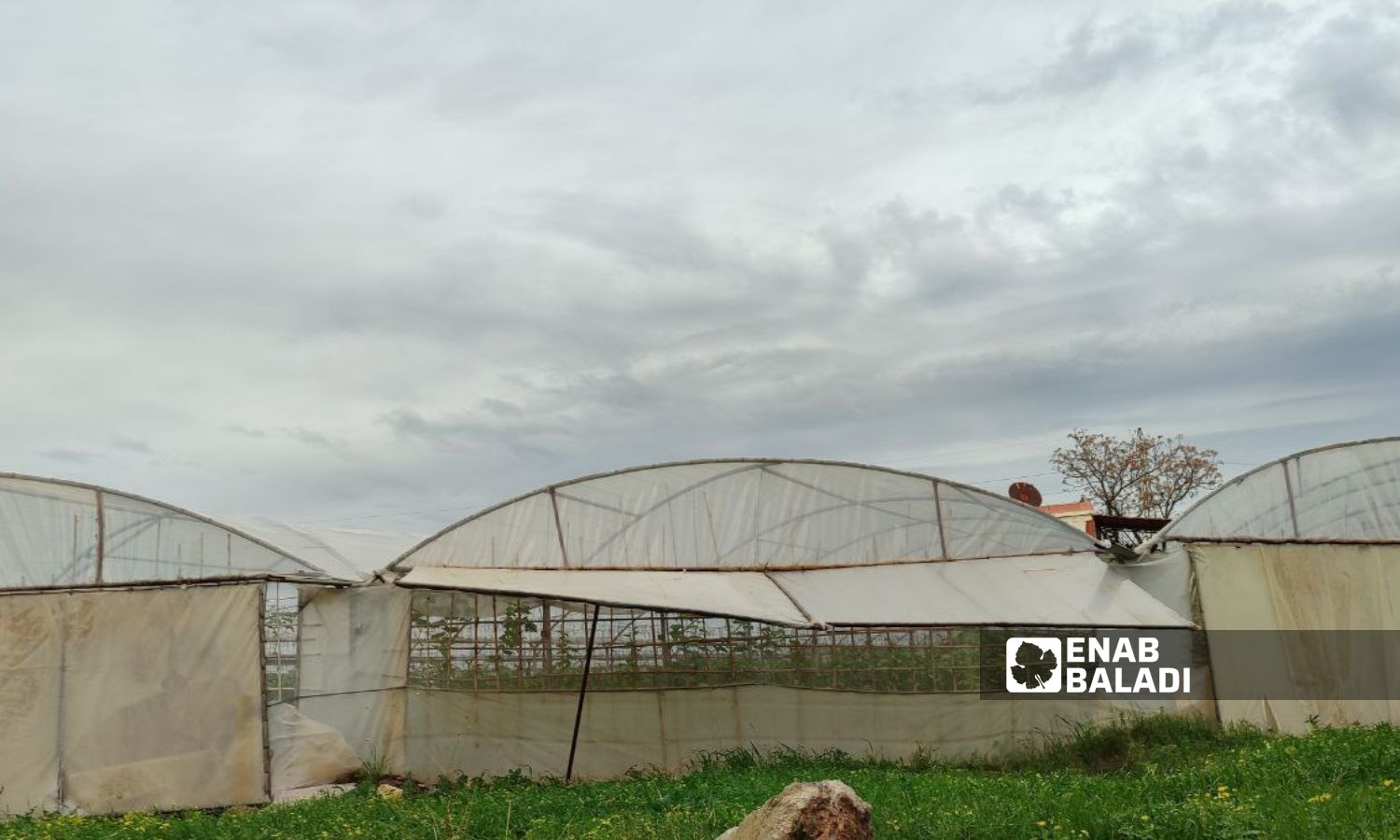



Enab Baladi – Tartus
Tomato cultivation is declining on the Syrian coast due to the high costs compared to other crops, such as bananas.
The coastal province of Tartus, specifically the city of Banias, is known as one of the most important tomato production areas. Its moderate weather supports the spread of greenhouses, as there are no risks of frost like in other regions. Moreover, the tomatoes there are famous for being a desirable type for export.
Recently, the majority of tomato farmers have been shifting to cultivating bananas, as it is much more economically viable compared to tomatoes, posing a threat to the future of tomato farming.
According to farmers’ expectations, tomato production in Banias will sharply decline within five years in favor of bananas.
An agricultural engineer, who preferred not to disclose his name, told Enab Baladi that in the town of al-Kharab, which was the first in Tartus province to grow tomatoes in greenhouses, tomato cultivation has declined by more than 65%.
He explained that farmers have replaced tomatoes with bananas, as they are much more productive without significant costs. Bananas do not require 10% of the production costs needed for tomatoes; in addition to the fact that the tree yields fruit in less than two years after planting.
The agricultural engineer explained the production costs of tomatoes, stating that marketing, packaging prices, and transportation consume 30% of the total season’s proceeds. Additionally, 20% goes to the farmer if the landowner does not work manually, and the remaining 50% may not cover the production costs if the yield is not plentiful and the price is not satisfactory.
He further added that a 400-square-meter greenhouse requires the replacement of plastic (nylon) every two years at a cost of four million Syrian pounds. Furthermore, other supplies are subject to the decrease in the value of the Syrian pound against the US dollar (every dollar is equivalent to 14,500 pounds).
Among the production costs for a single greenhouse are plowing twice a year at a cost of 100,000 pounds each time, organic fertilizer at the value of 800,000 pounds, sterilization for 700,000 pounds, seedlings for around 1,700,000 pounds, threads needed to assist the seedlings in climbing for 400,000 pounds, chemical fertilizer for one and a half million pounds, and the same amount for pesticides.
The costs do not end there. A single greenhouse is supposed to produce four tons of tomatoes, requiring 300 packaging boxes at a price of 7,000 pounds each, totaling 2.1 million pounds. In addition, there is a transportation fee of no less than 700,000 pounds to transport the crop to the al-Hal market and a commission of 800,000 pounds for the merchant.
The agricultural engineer added that the production costs reach 12.4 million Syrian pounds for the greenhouse, which should produce four tons, meaning that the cost per kilogram is 3,100 Syrian pounds. Furthermore, luck plays a role in determining the profit and loss for the farmer. If the price is good, he will have a good season, but if the price is less than 3,000 pounds per kilogram, he will incur significant losses. Additionally, some greenhouses are susceptible to pests, so they do not produce even a quarter of the expected yield.
Faced with the aforementioned reality, many farmers in the Syrian coastal region, especially in the town of al-Kharab, have refrained from tomato cultivation and switched to cultivating bananas, which do not require any production costs, only water, and the price per kilogram of bananas averaging no less than 15,000 pounds, making it a profitable choice.
Safwan (48 years old), a farmer from the town of al-Kharab, replaced tomatoes with bananas two and a half years ago after spending more than 25 years in tomato farming and marketing them to the al-Hal market, where traders prepare them for export.
The state-run newspaper Tishreen quoted an agricultural expert, who was not named, as saying that more than 40,000 greenhouses have shifted from cultivating various vegetables, including tomatoes, to banana farming in al-Kharab, adding that the cultivation of bananas is increasing season after season.
Popular crops in the Syrian coast, as in most regions of Syria, face challenges in the high costs of agriculture, equipment, transportation fees, and labor, against a lack of outlets and the sale of products at prices that do not match the scale of costs.
if you think the article contain wrong information or you have additional details Send Correction